Everything You Need to Know About a Project Management Capability Framework
Reading Time:

Lead the pack with the latest in strategic L&D every month— straight to your inbox.
SubscribeA project management capability framework outlines the competencies required for effective project, program, and portfolio management.
That’s handy, considering project management is a skill we’ll need to flex at some point in our careers. In fact, the elements of robust project management practices are generally applicable in areas of business from an individual’s day-to-day and team dynamics to strategic initiatives.
There are a few factors to consider when managing projects: Success of investments, outcomes of the project itself, and the capabilities of those involved. We’re going to focus on the latter, namely how you can develop the right capabilities for effective project performance.
A capability framework for project management outlines the knowledge, skills, processes, and behaviours necessary for project management excellence.
What is project management capability?
A project management capability describes the processes, tools, methods and behaviours required to deliver on an organisational project. A project management (PM) capability framework then describes a collection of capabilities required for a project manager to start and finish a project in line with an organisation’s mission and industry standards.
Why is a project management capability framework important?
In the past, “project manager” has been a defined role for an individual trained in certain methodologies and processes, often certified by a project management institute. This was because most organisations understood project management to be a mission-critical capability.
But today’s project activities require a different approach. Almost anyone can be a project manager thanks to the democratisation of office hierarchies and remoteness of the office itself.
So, it’s harder and harder to assess project management as a strict job role. It’s more of a flexible job description. That change begs many questions. Should you compare your processes to competitors or a benchmark? What abilities are expected of project managers and how can you recognise high performance? What are the defined parameters for project delivery?
A framework may seem daunting at first, but often you’re just codifying what is already informally institutional (i.e. stored in employees’ heads but seen as “how we do things”). It’s a tool for both organisation and employees to understand what ideal project management knowledge, performance, and behaviour looks like.
Codifying ideal performance is generally hard, given it’s done in the flow of work and exacerbated by differing perceptions of ideal performance. Corporate learning solutions rarely help; they only push more content to overwhelm and confuse learners, without offering a way to capture knowledge.
We created the performance learning management system (PLMS) for this reason. It enables you capture and transform learning in the everyday into shareable learning assets, codifying desired capabilities. That’s on top of mapping content to project management capabilities, so employees can master the skills, behaviours, tools and processes relevant to their specific roles.
The impacts of not using a PM capability framework
Consider that most projects drive change and value creation in a business, moving you from one state to another more desirable one. Then think about the scenarios in which it’s not an official project manager stepping up to the plate, but rather any given employee. Providing the blueprint for successful, effective project management is what a framework is all about.
On the flip side, projects don’t exist in a vacuum. Any projects goals will filter down from a CEO’s focus on certain business strategies. Your project managers turn abstract into practical—or CEO wishes into business action. And those wishes can almost always be traced back to three metrics: Strategy, cash flow and people.
Having employees with project management competence ready to go is key to fulfilling these wishes. Using a framework then becomes about two things:
- Professional development on project management concepts, risks and activities.
- Further development opportunities for trained project managers.
How a capability framework for project management works
We should start by refreshing ourselves on what a capability framework is. A standard organisational capability framework outlines the knowledge, behaviours and skills required for said organisation to achieve their goals. Many break frameworks down by job role or business driver, which is where project management comes in.
Let’s go back to our point about projects not existing in a vacuum. Understanding the root of project delivery helps to create some cohesion when building a PM capability framework, considering a framework is the step-by-step for how you’ll meet projects. Compared to a standard capability framework—where the outcomes of capabilities are stable—a PM capability framework is especially helpful since not all projects are seeking the same objectives nor are your project managers always up to date on performance criteria.
How you use a PM capability framework depends on what you’re trying to achieve. It should simultaneously act as a performance benchmark for project managers and a foundation for HR leaders to create professional development opportunities.
So, if we’re talking about ensuring excellence in both a project management professional and an employee stepping into the role, we can judge by two use cases:
- Self-assessment
- Strategic training.
Project management self-assessment
We’ve already addressed projects at a high level. But if we think of a project as a collection of tasks that accomplish a goal, you can see where performance criteria can shape the day to day.
Look at all your employees as individual project managers. A PM framework should be clear enough for all to use for self-evaluation before, during and after a project. Over time, a universal view of good performance helps remove subjectivity bias. It also:
- Impacts how individuals and teams plan, track and execute work, which in turn affects collaboration.
- Increases efficiency and effectiveness through streamlined and benchmarked practices.
- Determines how project risks are mitigated in line with business benefit management.
How to assess project management capabilities
Let’s borrow from the International Project Management Association’s (IPMA) Individual Competence Baseline (ICB4). Rather than a whole-of-organisation approach, it’s designed to help those working in project management understand what high performance looks like through three areas of competence.
- People: Interpersonal and behavioural capabilities.
- Practice: The tools, techniques and methods used to realise project success.
- Perspective: The context and environment in which the individual and project exist.
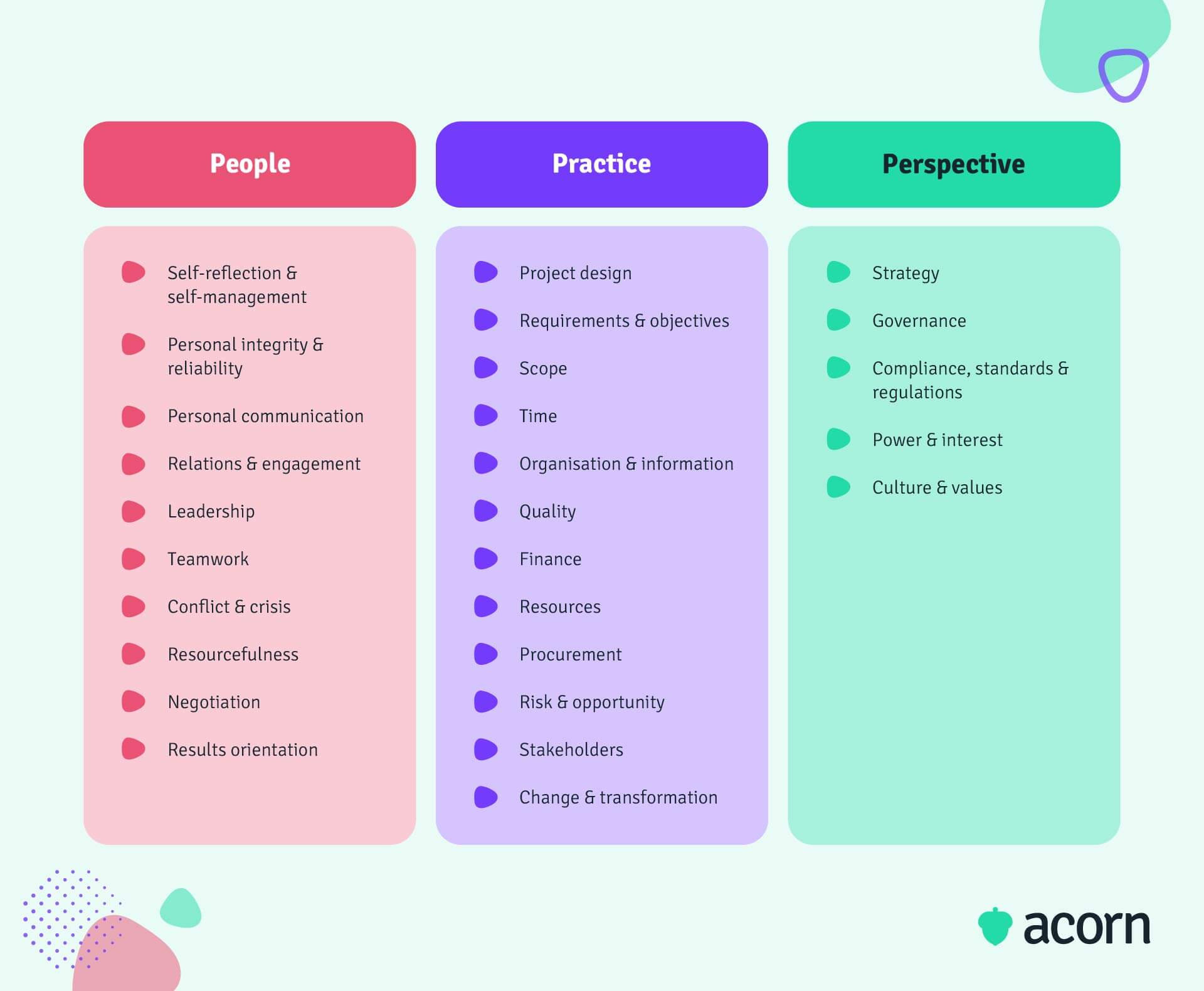
At a high level, a framework enables project team members to evaluate how they:
- Set relevant goals and tracked progress against them
- Managed competing personal stakes with getting the job done right
- Delegated work they could have done to others in the name of efficiency
- Planned for and managed risks, including if they did or faced any
- Worked with stakeholders from different organisational levels
- Used insights to design process improvements, even if for themselves.
The ICB4 provides detailed descriptions of each PM capability, including the knowledge, skills and abilities needed within each as well as for the respective competence indicators.
For example: Project Design is defined as “how the demands, wishes and influences of the organisations are interpreted and weighed by the individual and translated into a high-level design of the project to ensure the highest probability of success.” This covers five competency indicators (which reflect sub-capabilities you may be used to seeing in private frameworks).
Just as there are three categories for capabilities, they include three facets of competency.
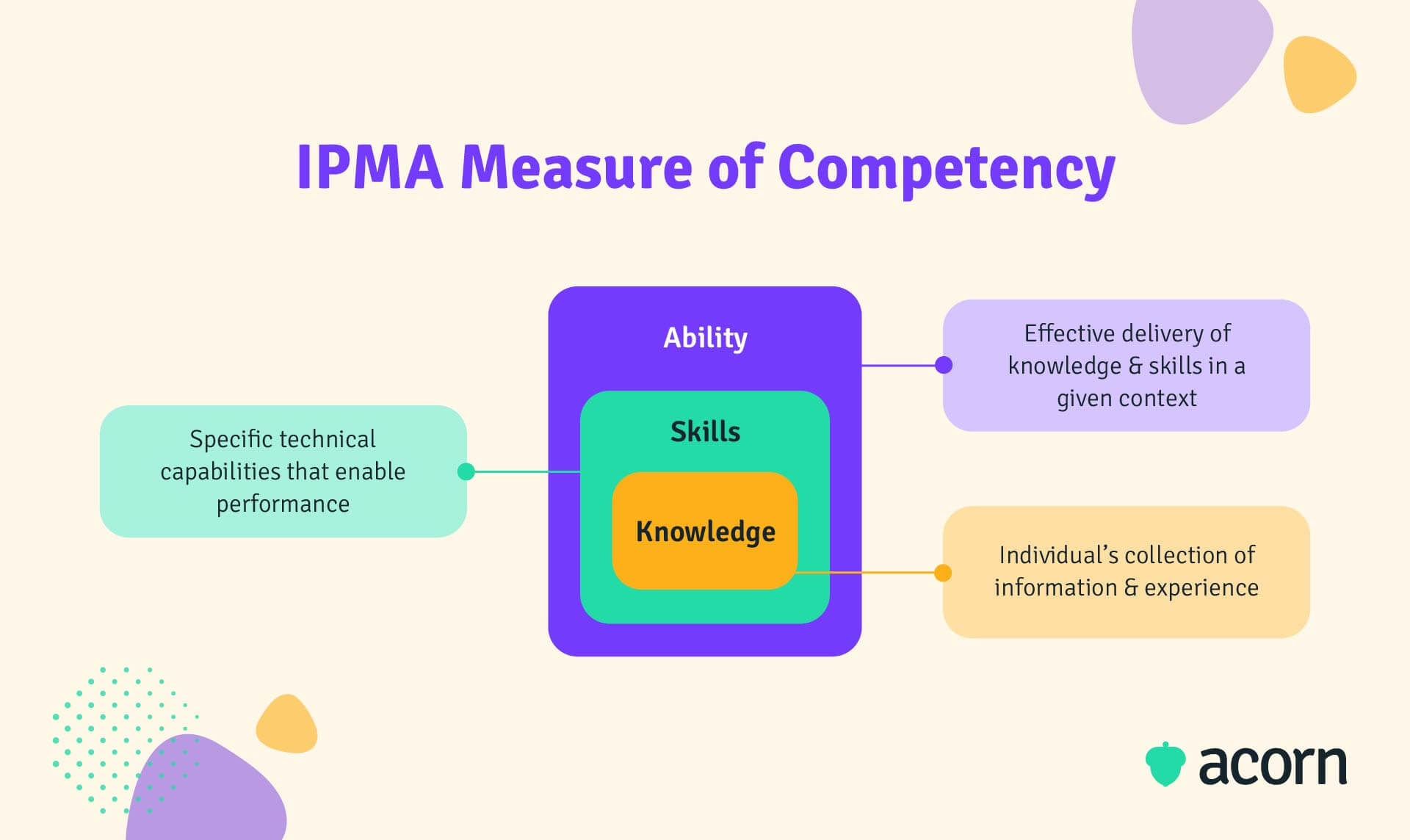
The idea is that these feed into one another. Skills require technical knowledge to effectively perform them, and the ability to perform in one’s role is dependent on the skills and knowledge a person possesses.
So, if an individual is attempting to assess their competency in Project Design, they can start by looking to required knowledge like:
- Success criteria
- Lessons learned
- Strategy
- Leadership styles.
In order to gauge skills and abilities such as:
- Contextual awareness
- Incorporation of lessons learned
- Result orientation.
Strategic training
Strategic training differs from regular employee upskilling by linking learning directly to business impacts. While we believe all training should be strategically minded, we want to talk about it in the context of designing L&D for those in a project manager role.
The Project Management Institute (PMI) developed a framework specifically for project managers with a few years’ experience. Similar to IMPA’s framework, the PMCD (Project Manager Competency Development) Framework seeks a standard in excellence.
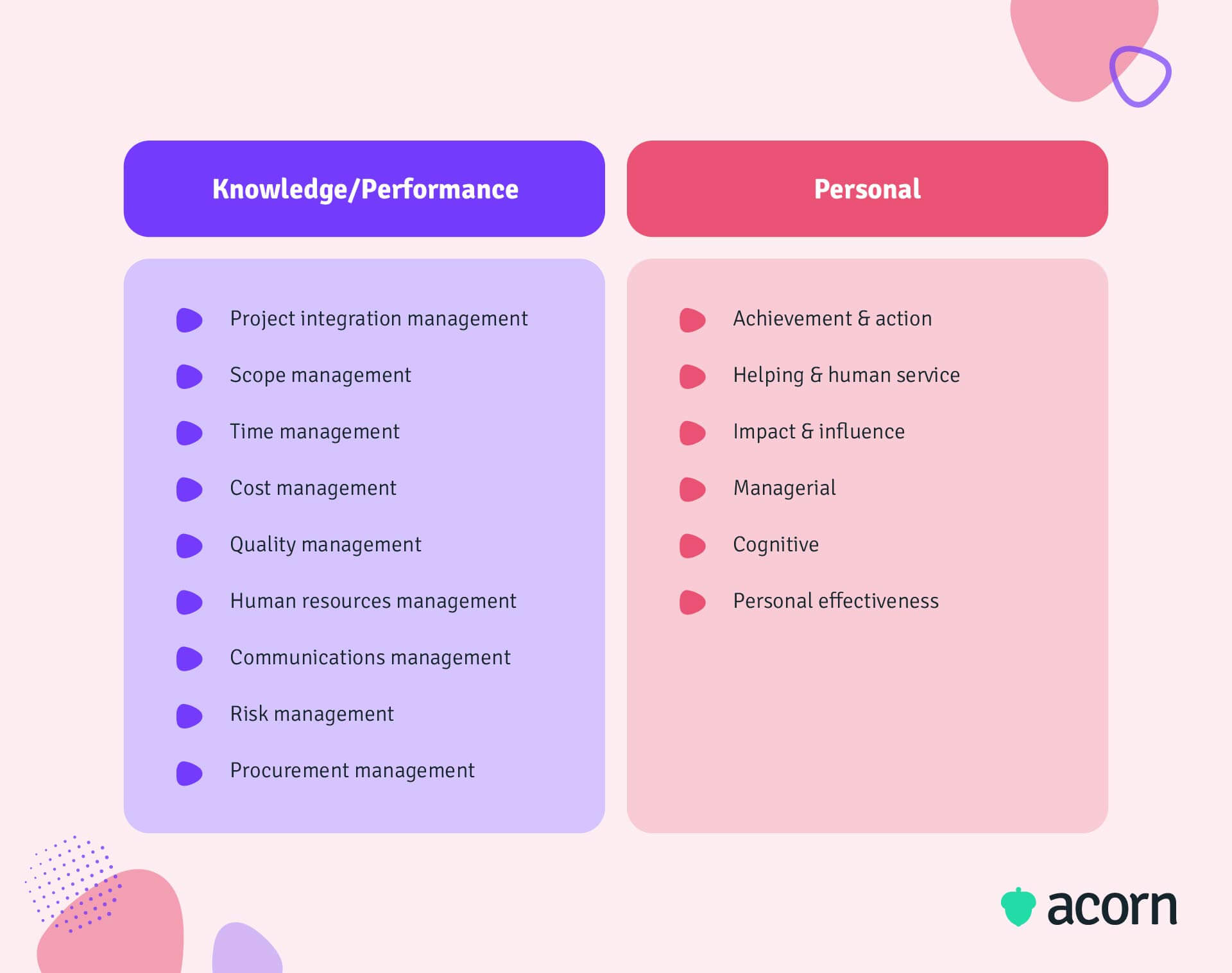
The PMI standards are also narrowed to three pillars of competence: What a project manager should know, do and be.
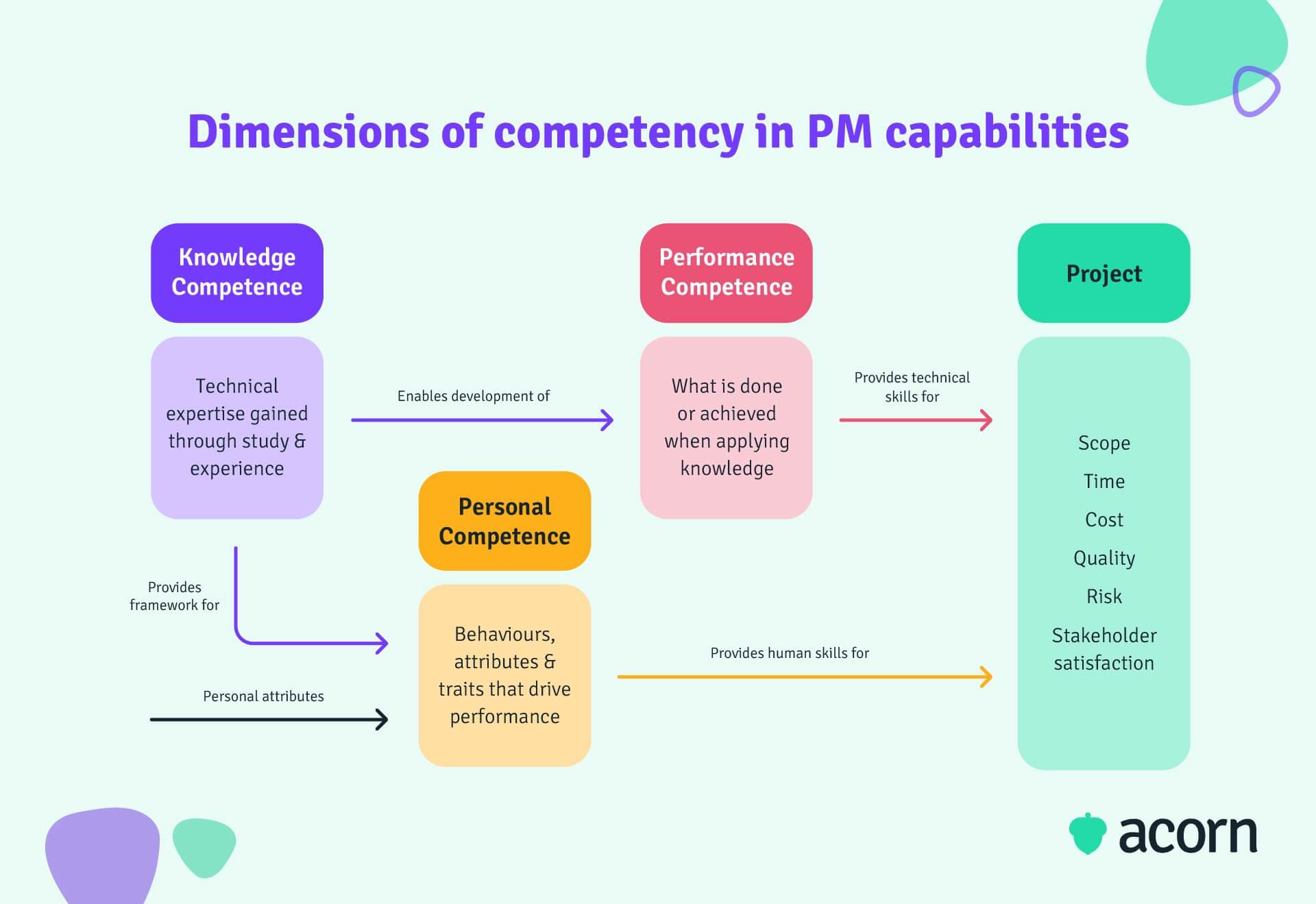
Let’s look at how L&D professionals can use this for training. As with all training, think about using a framework to address gaps in performance.
Step 1: Identify environmental needs
Part of the reason almost any employee can be a project manager is the environment in which they work. It’s not about making a framework somehow relevant to every manager’s situation, but rather picking the capabilities from it that will help an individual achieve project success.
The simplest way to do this is by asking what current project managers experience. What is needed for an IT project will be different than the complexity of a cross-team collaboration.
This is important for designing personalised development pathways and ensuring that your training outcomes serve a strategic purpose.
Step 2: Determine desired competence
What is the bare minimum and what is a marker of excellence? This is generally why many capabilities are broken down by sub-capabilities, or in this case, competency clusters.
For example, you could have Impact and Influence as a core PM capability. But proficiency in that is determined by the level of autonomy, drive and urgency displayed in performing it.
Step 3: Assess and address gaps
The PMI standards have these as two separate steps, but we think they work better as one. Use performance reviews, learning data and the self-evaluations mentioned above to identify areas of weakness.
This gives you a holistic view of what individuals know, how they apply it and how they behave. The right learning intervention will depend on the element of personal competence you’re looking at.
- Behavioural faults might benefit from networking or mentoring with other project managers
- Online courses can help build technical knowledge
- On the job experience, such as heading up a short-term initiative, would address issues with skills application.
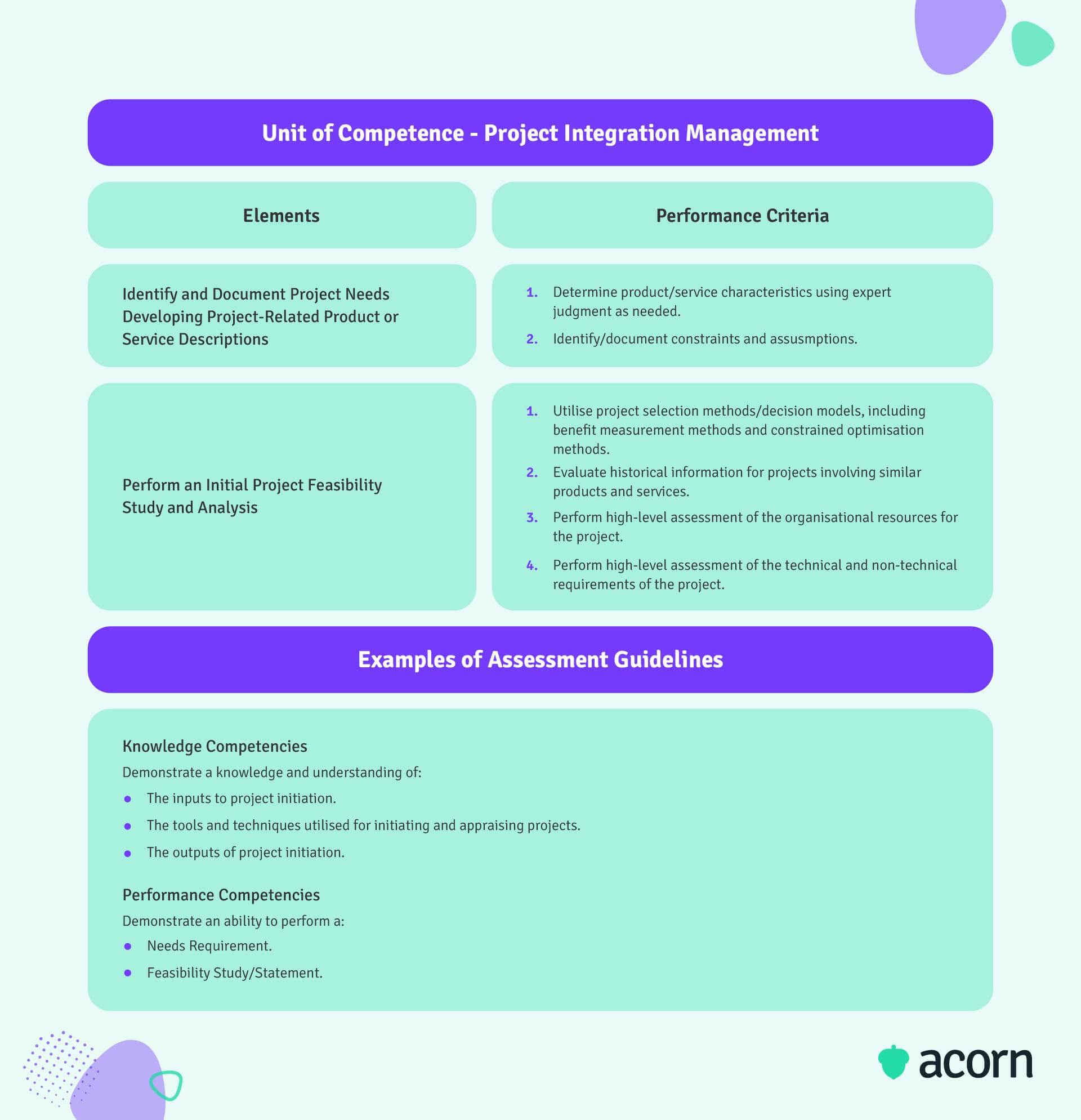
Key takeaways
Without a PM framework, timelines can blow out and productivity reduces, and it’s usually project structure and delivery errors versus the actual project work itself that drive this. Considering that projects of all sizes impact business, that’s a big blow to revenue, profit and growth.
A framework sets a universal standard for how project work should get done, in terms of the knowledge, behaviours and skills needed. There are two big ones out there you can use in your organisation:
- The Individual Competence Baseline, which can help guide project manager self-evaluations.
- The PMCD Framework. It looks more closely at measuring and addressing competency gaps.
Whether you use one, both or neither in favour of your own, just remember that it’s important to simply have one. The project management professional can be anyone in your organisation, given enough support and training.